Harpoon Heads Item Number: E7440-0 from the National Museum of Natural History
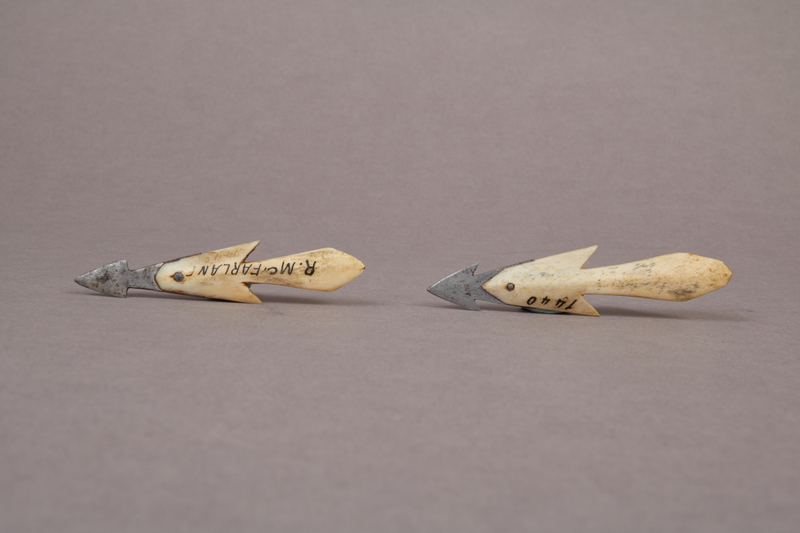
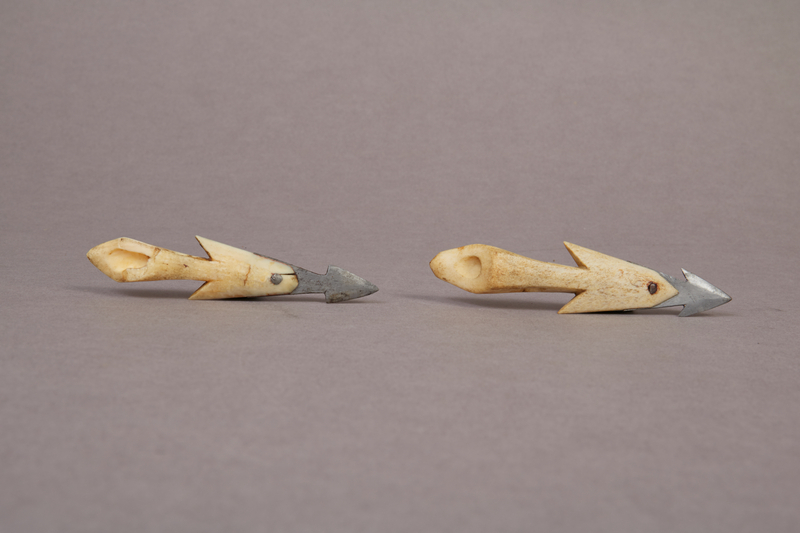
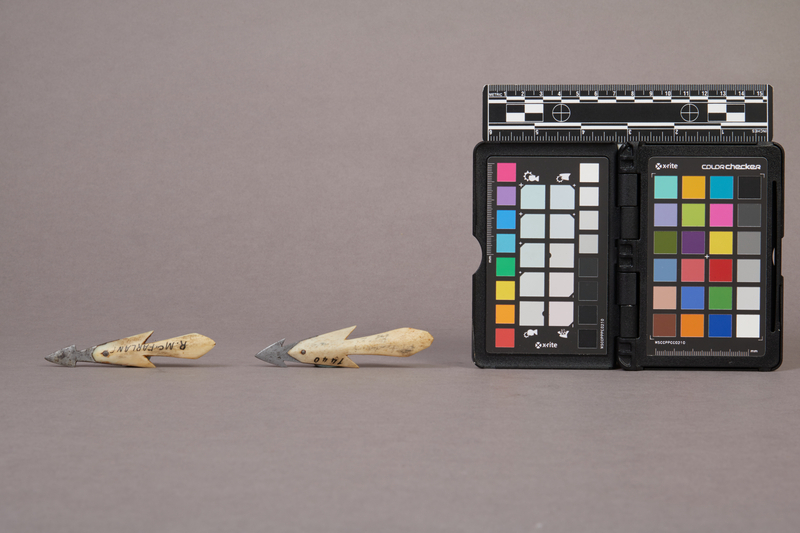
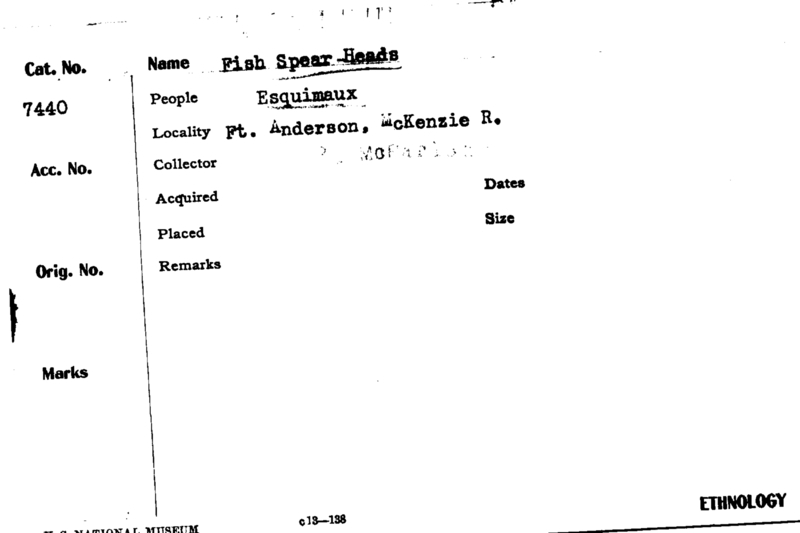
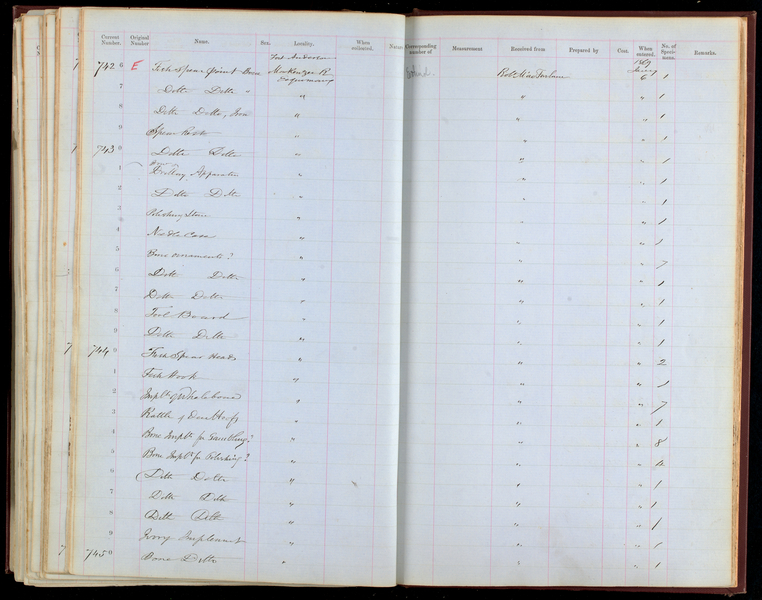

Notes
From card: "Fish Spear Heads."Source of the information below: Inuvialuit Pitqusiit Inuuniarutait: Inuvialuit Living History, The MacFarlane Collection website, by the Inuvialuit Cultural Resource Centre (ICRC), Inuvik, N.W.T., Canada (website credits here http://www.inuvialuitlivinghistory.ca/posts/12 ), entry on this artifact http://www.inuvialuitlivinghistory.ca/items/271 , retrieved 1-28-2020: Two ivory harpoon heads tipped with iron blades. The body of each of the harpoon heads has a single set of paired barbs, and the iron blades are also barbed. The blades are secured in blades slot by rivets. One has a copper rivet, and the rivet on the other harpoon is made of iron. These items were originally identified in the Smithsonian Institution's catalogue as 'fish spear heads', but the size and style is consistent with harpoon heads used for hunting sea mammals. More information here: http://www.inuvialuitlivinghistory.ca/item_types/30: Harpoons are used for hunting sea mammals such as seals and whales. They have a point, or 'head', that separates from the rest of the harpoon and remains attached to the quarry. A line running from the harpoon head is held by the hunter or attached to a float, allowing the animal or fish to be retrieved. Thrusting harpoons, used for hunting seals at breathing holes on the sea ice, generally have long foreshafts that swivel inside a socket piece attached to the harpoon shaft in order to release the harpoon head. Throwing harpoons used for hunting seals and whales in open water normally have foreshafts that are more securely fixed to the harpoon shaft. Both types are found in the MacFarlane Collection.
Item History
- Made in Northwest Territories, Canada
- Collected in Northwest Territories, Canada
- Received from Roderick R. MacFarlane on January 7, 1869
What
- Name
- Harpoon Heads
- Identification Number
- E7440-0
- Type of Item
- harpoon
Who
- Culture
- Eskimo, Inuit and Inuvialuk
- Received from
- Roderick R. MacFarlane
Where
- Holding Institution
- National Museum of Natural History
- Made in
- Northwest Territories, Canada
- Collected in
- Northwest Territories, Canada
When
- Acquisition Date
- on January 7, 1869
Other
- Accession Number
- 69A00012